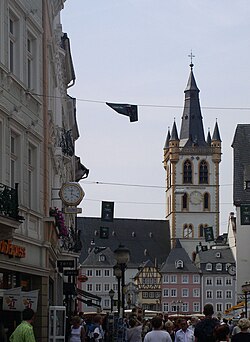This article has multiple issues. Please help improve it or discuss these issues on the talk page . (Learn how and when to remove these messages)
|

St. Gangolf's Church is a Roman Catholic church in Trier, Germany. It is dedicated to St. Gangulphus. After Trier Cathedral, it is the second oldest church building in the city.